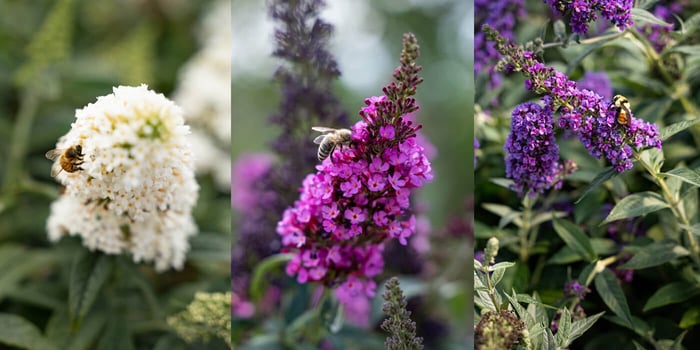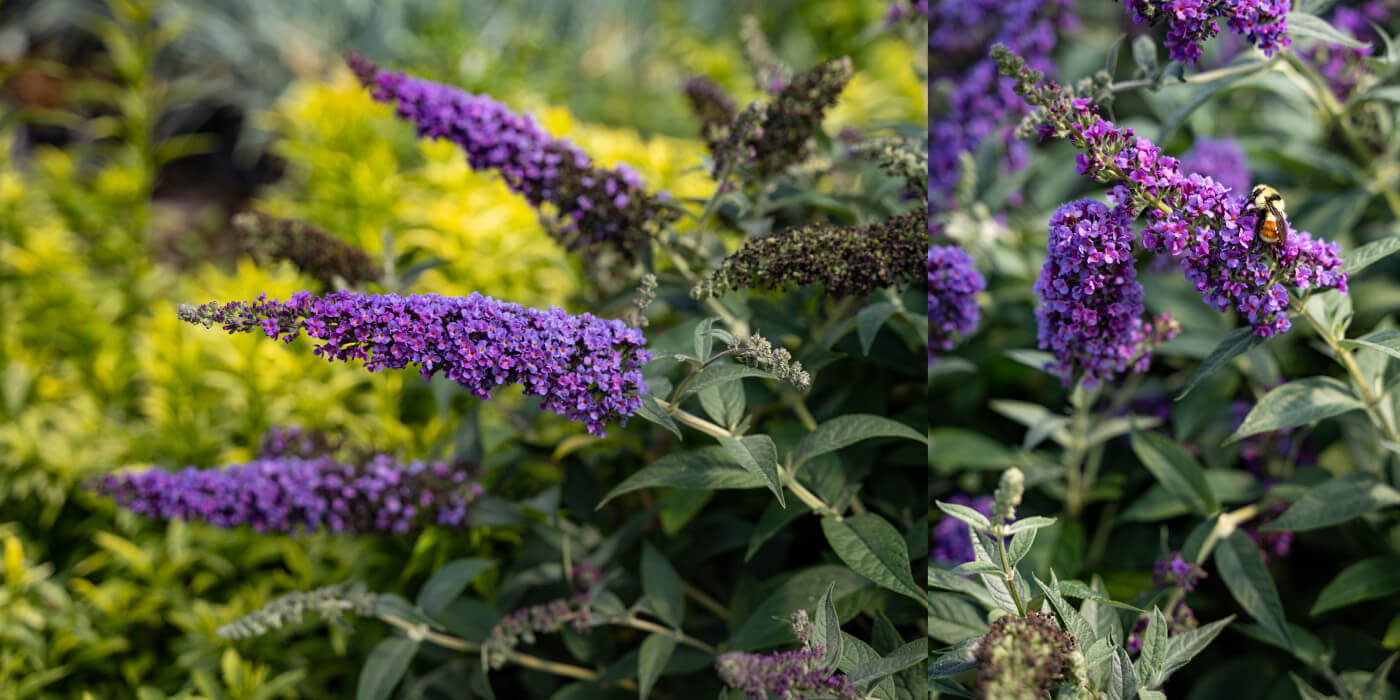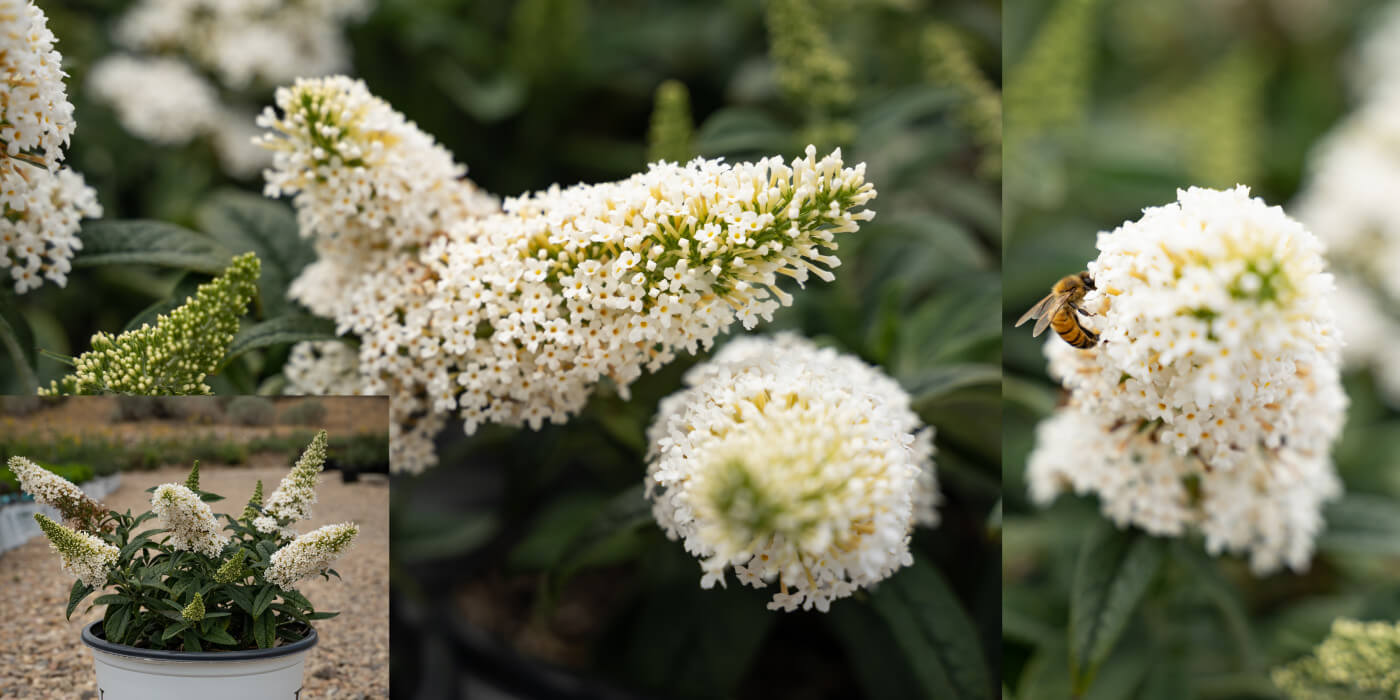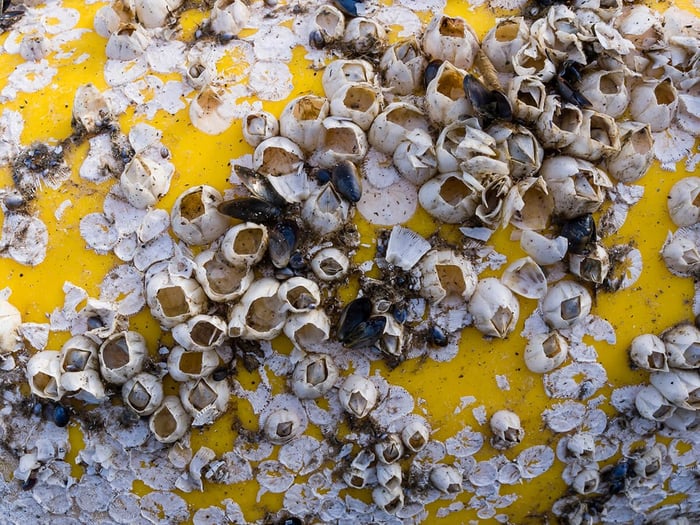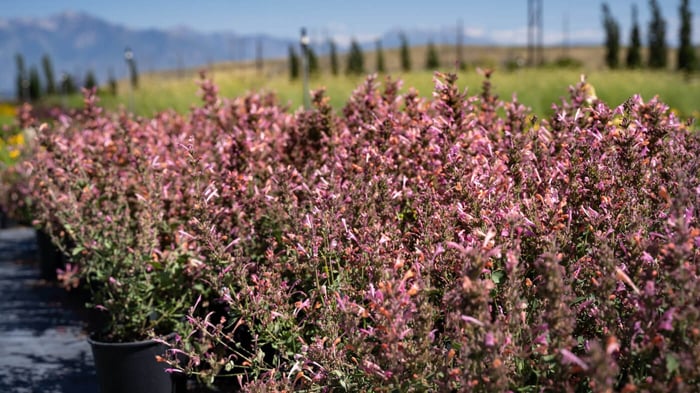How would you describe your ideal shrub? Would it be widely adaptable and versatile enough to fit in any size garden? Would it need to be able to tolerate various soil conditions, occasional drought, and even the nasty water from Utah Lake? Would you like a shrub that attracts pollinators in droves, including bees, butterflies, and hummingbirds? Believe it or not, that plant actually exists. It’s called Buddleia, better known as Butterfly Bush.
 Buddleia davidii BUZZ Hot Raspberry Butterfly Bush
Buddleia davidii BUZZ Hot Raspberry Butterfly Bush
Many of you may think you already know what butterfly bushes are, and you may already have your own opinion of them. However, this impressive plant is so genetically diverse that whatever image you have in your head is just the beginning. They grow in a wide array of sizes, from 12 feet tall and wide, to 2 x 2, and every size in between. Some may be described as gangly while others would be considered neatly compact.
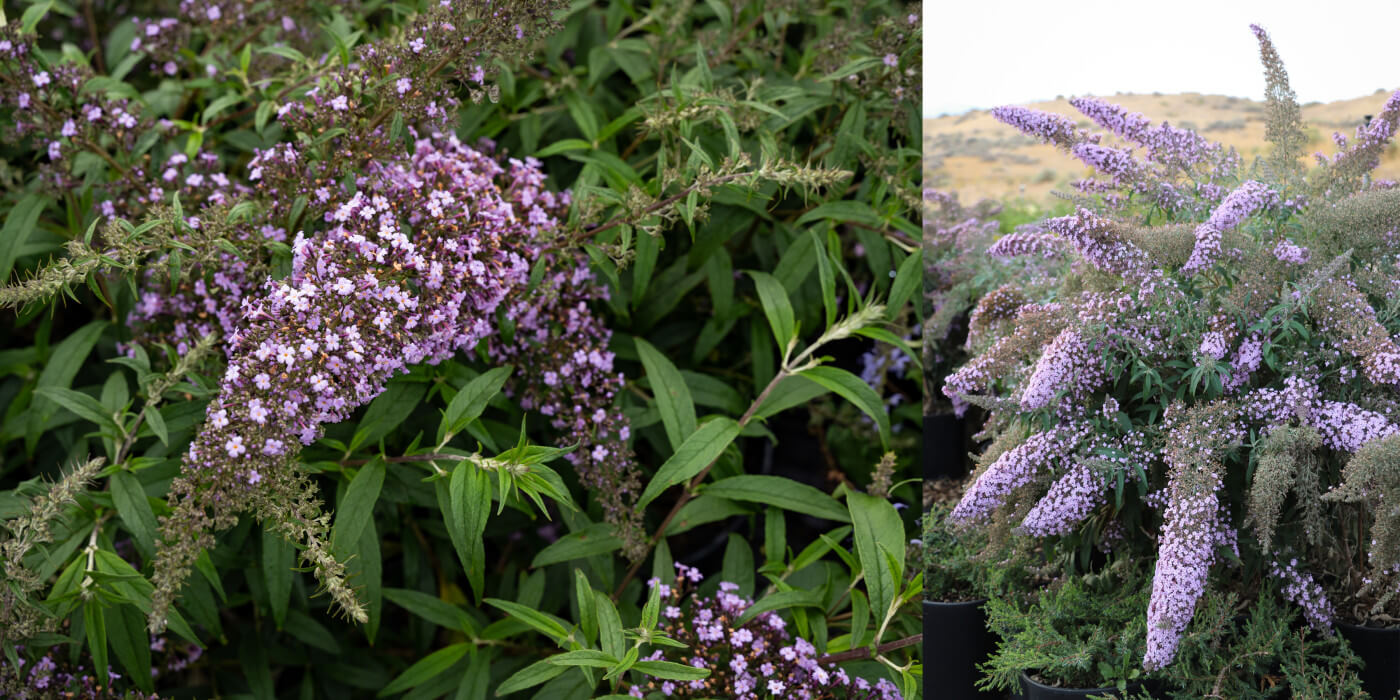 'Grande Cascade' Butterfly Bush
'Grande Cascade' Butterfly Bush
Every variety will load itself down with clusters (panicles) of flowers, but each cultivar has different blooms. Many produce flower panicles that are cone-shaped while others look more cylindrical. Some are narrow while others are plump and full. Some flower panicles are so large they droop over and look almost out of place in comparison to the plant! They’re a truly fascinating shrub.
Whichever cultivar you choose, you’ll love how easy they are to care for. In fact, it’s such a reliable shrub that the National Garden Bureau has selected Buddleia (Butterfly Bush) as the Shrub Of The Year for 2024. The organization selects plants that are easy to grow, widely adaptable, genetically diverse, and versatile. With that criteria, it’s easy to see why they made this selection. They're some of the most versatile shrubs you can grow in your Utah Landscape, and they are perfectly adapted for our growing conditions.
'Itsy Bitsy Blue' Butterfly Bush
Most varieties are hardy to zone 5, so they’ll do well in the valleys and bench areas. In fact, you may notice that your buddleia stay green during mild winters. They love areas of full sun, tolerate most soil conditions, but prefer well-draining soil. They tolerate water from any source, including Utah Lake. Just make sure that they aren’t sitting in water. Too much water can lead to root rot. In fact, buddleia can handle short seasons of drought easier than they can tolerate soggy roots.
Many cultivars will reproduce from seed, so in some areas of the country they’re considered invasive. However, because Utah has such challenging growing conditions, buddleia are not considered invasive here. Some varieties will reseed themselves, but the seedlings are easily removed in the spring. Plus, there are some new cultivars on the market that are sterile which will not intrude where they aren’t wanted. In our experience, the shrubs we’ve planted in the landscapes we’ve designed have behaved themselves beautifully.
Buddleia Pugster Amethyst Dwarf Butterfly Bush
Buddleia is a low-maintenance plant that only needs a few simple steps to thrive and attract loads of butterflies and other pollinators.
First, plant them in full sun. Buddleias grow best and produce more flowers in locations that receive at least six hours of direct sunlight each day.
Next, plant them in well-draining soil. They can tolerate a variety of soil conditions, but if the soil doesn’t drain well enough, it can become waterlogged and cause root rot. If your soil is heavy, amend it with compost to improve drainage.
Regular watering is essential, particularly during dry spells or in hot climates. Water deeply at the base of the plant, allowing the water to reach the root zone. However, be cautious not to overwater.
Buddleia Pugster White Dwarf Butterfly Bush
To encourage healthy growth and abundant flowering, it helps to fertilize your buddleia. Apply a balanced slow-release fertilizer in early spring, following the package instructions. This will provide the plant with necessary nutrients throughout the growing season.
Prune in late winter or early spring to allow for vigorous growth during the upcoming season. Remove any dead, damaged, or crossing branches, and aim for an open and airy shape. This will not only enhance the plant's appearance but also improve air circulation, reducing the risk of disease. One quick pruning per year is all it needs.
Lastly, keep an eye out for common pests and diseases that can affect your plant, such as aphids, slugs, earwigs, spider mites, and powdery mildew. Regularly inspect the plant and take appropriate measures to control any infestation or infection.
These simple tips can keep your buddleia plants happy for years to come. They’ll add beauty to your garden and attract hummingbirds, butterflies, and other beneficial insects with their stunning blooms from spring through frost.

